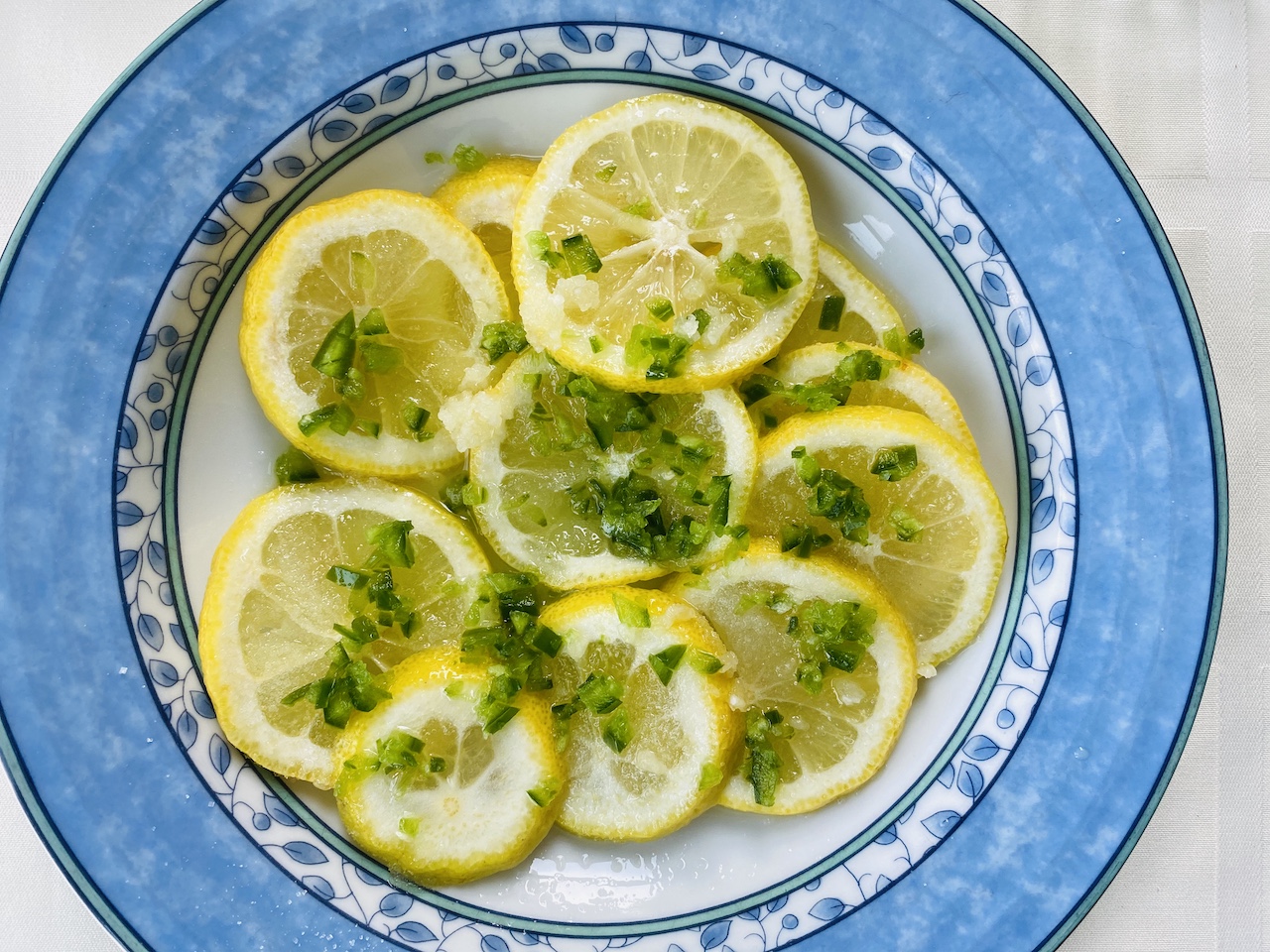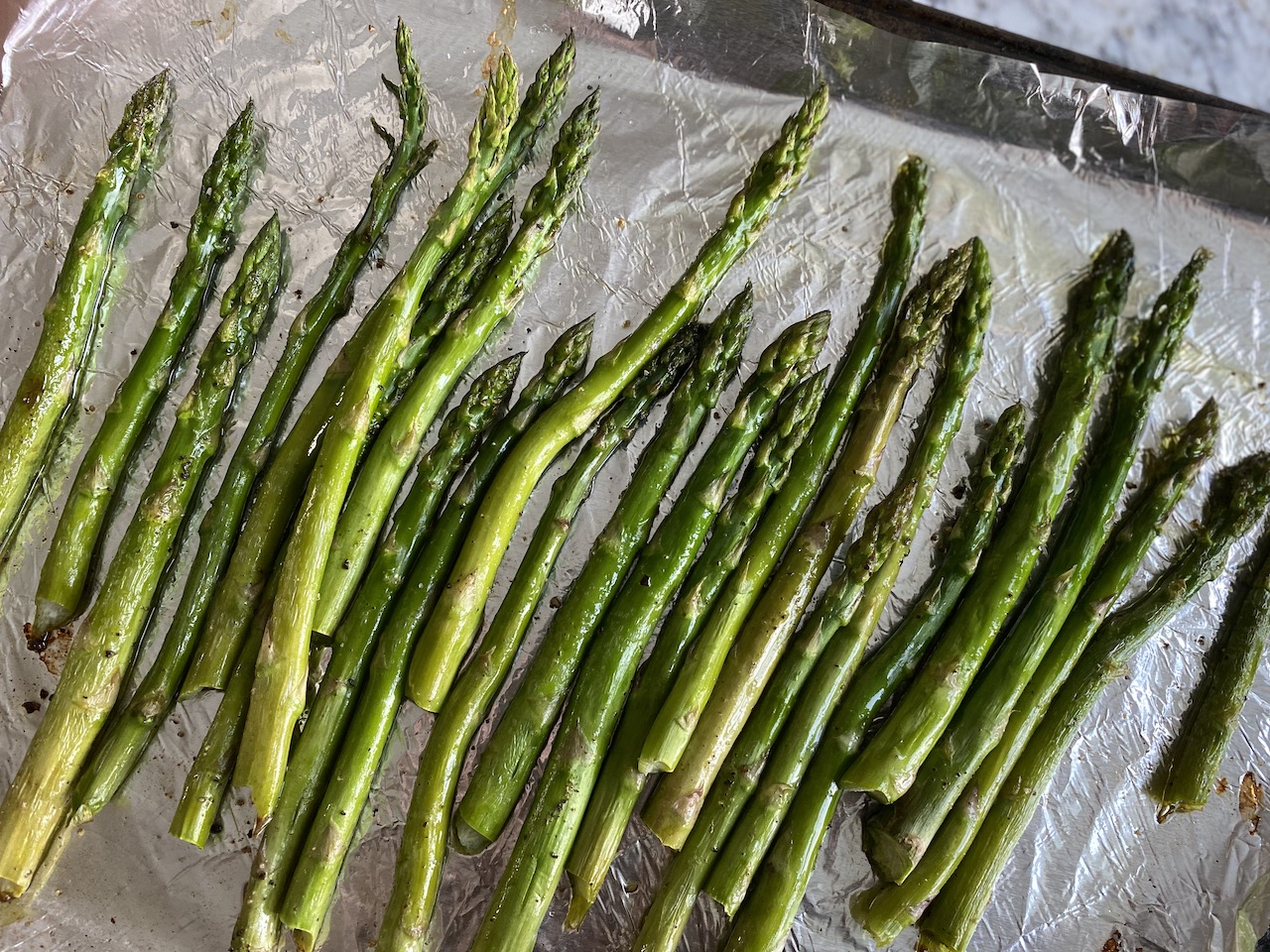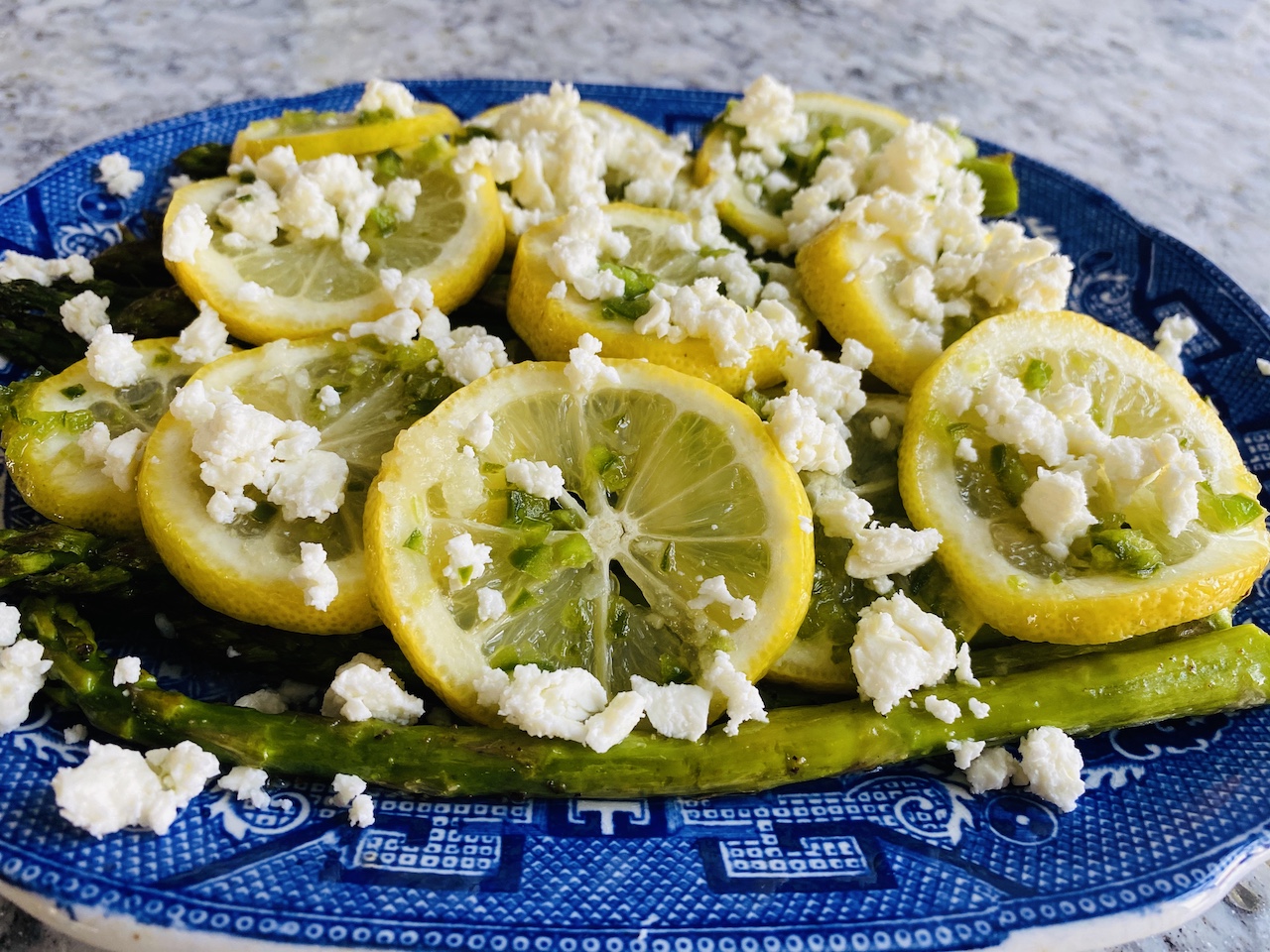
Roasted Asparagus with Pickled Lemon and Feta
I love asparagus. Green asparagus, white asparagus, even purple asparagus. I could easily eat it every week and never tire of it. I love it with my mother’s hollandaise sauce and with this easy buttery caper sauce. But my favorite way to eat it right now is with this pickled lemon and feta, a simple recipe from the Chicago restaurant Avec. It’s lemony, a little bit spicy and salty, but still allows the asparagus to come through.
Growing up in Chicago, I always knew that Michigan grew a lot of asparagus, but I didn’t realize just how much. Michigan is currently the largest producer in the US, producing as much as 23 million pounds each year. Being this close to Michigan means that our local grocery store and every farmer’s market sells fresh, Michigan asparagus – even though most of the asparagus sold in the US these days is actually imported from Peru and Mexico. (Between 2004 and 2014, the amount of asparagus grown in the US decreased dramatically – by one estimate, by 64 percent – in large part due to these cheaper imports.)
The asparagus season is winding down, but before it ends completely I wanted to grab this moment to talk about labor conditions in the asparagus industry. Although I just spent the past couple of months enjoying my local Michigan asparagus, I actually want to focus on asparagus grown in Germany, where eating white asparagus in the spring is a national pastime. I had never eaten white asparagus until I moved to Germany. But in Germany, every year in late spring, restaurants starts to list asparagus – Spargel – as the special. Markets and grocery stores sell it, and everyone gets really excited about Spargelzeit (asparagus time). I never learned to cook the white kind, but my wonderful roommate would cook it with prosciutto and potatoes – and it was always delicious!
Germany is a large producer of asparagus – it’s the fourth largest in the world – producing about 130,000 tonnes(286,601,000 pounds) of asparagus each year. Growing and harvesting white asparagus is hard work, much more labor intensive than green asparagus. White asparagus is grown underground; mounds are piled up on top of it so that it doesn’t see sunlight while growing. (White and green asparagus are actually the same vegetable, but white asparagus hasn’t had the chance to photosynthesize since it’s grown underground.)
Like most agricultural work, the German asparagus industry is dependent on migrant workers. In Germany, as in other Western European countries, agriculture depends on Eastern Europeans, 70-75 percent of whom are from Romania, Bulgaria, or Poland. While technically paid minimum wage, workers don’t earn much for three months of hard work. A Romanian man who worked in Germany in 2019 explained that he had worked 10 hours a day, seven days a week for three months and ended up taking home only 1,800 euros, after an additional 1000 euros he earned went to cover his lodging and food costs in Germany.
This year, because of Covid-19, the German borders were closed, leaving German farmers without the 300,000 seasonal agricultural workers they depend on. Germany wasn’t alone; across Europe, farmers feared that they wouldn’t be able to harvest their crops with the borders closed. As it became clear that the white asparagus might rot in the ground if workers weren’t found to harvest it, Germany allowed farmers to pay for up to 40,000 Romanian and Bulgarian workers to fly on charter flights directly to Germany in April and another 40,000 to enter a month later.
On their way to Germany, Romanian workers were apparently jammed together before boarding planes, risking the spread of Covid-19. Upon arrival in Germany, workers were required to live in a quasi-quarantine. Rooms had to be at half capacity, workers had to wash all dishes and clothing using hot water, they were to work and live separately from any German workers, and they were not to leave the farm. However, there are unverified reports that workers were actually living in rooms with four or more people, which contravenes social distancing guidelines. Workers this year have also complained that they are earning only 6 euro an hour, instead of the minimum wage of 9.35 euro, with the 3.35 euro going to cover their accommodations.
I don’t have a great summary or suggestion for this post. The asparagus season in Germany is over and, in the crazy world we currently live in, who knows what next year will bring. But I wanted to talk about this because one of the goals of this blog is to discuss the variety of ways in which labor migration and other political issues influence our food system. In this case, the EU has created open borders, yet labor migration patterns emphasize the stark differences between eastern and western Europe. The EU provides Western European countries with easy access to cheap labor. Because Eastern Europeans can travel to and work in Germany legally and are willing to do unenviable jobs for less money, Germany and other Western European countries benefit from these patterns.
There has been some great reporting on the broader issues of labor migration during Covid-19. For a good overview, take a look at this article from the New York Times and this one from Jacobin.
Roasted Asparagus with Pickled Lemon and Feta
Course: Recipe, Side6
servings30
minutesAdapted from a recipe from the restaurant Avec. Thanks to Mick Klug farms for sharing this recipe in June’s CSA.
Ingredients
1 lemon, sliced (with skin and pith on, but remove the seeds)
1 tablespoon lemon juice
½ small jalapeño, minced
1 garlic clove, minced
1 tablespoon sugar
½ teaspoon salt
2 pounds of asparagus
2 tablespoons olive oil
Salt and pepper
¼ cup Feta cheese, crumbled
Directions
- Cut the lemon into thin slices. Keep the skin and pith on, but once cut remove all the seeds. Combine the sliced lemon, lemon juice, minced jalapeño, minced garlic, sugar, and salt in a bowl. Mix everything together and mash it up a little bit. Let it sit for at least 30 minutes.

- Preheat the oven to 425˚F (220˚C). Place the asparagus on a baking sheet, drizzle with olive oil, and season with salt and pepper. Mix the asparagus so that it is evenly coated.
- Roast the asparagus until it is tender, about 7-10 minutes.

- Place the asparagus on a plate and add the lemons and pickling juice. Top with crumbled feta and enjoy!







2 Comments
Amalia
Interesting post. The recipe looks good. I’ll have to try it. I am not a fan of white asparagus-though perhaps I just haven’t had the right preparation
Bites & Rights
This is with green asparagus, so maybe you’ll like it! And good white asparagus is delicious, but it does have to be cooked correctly.